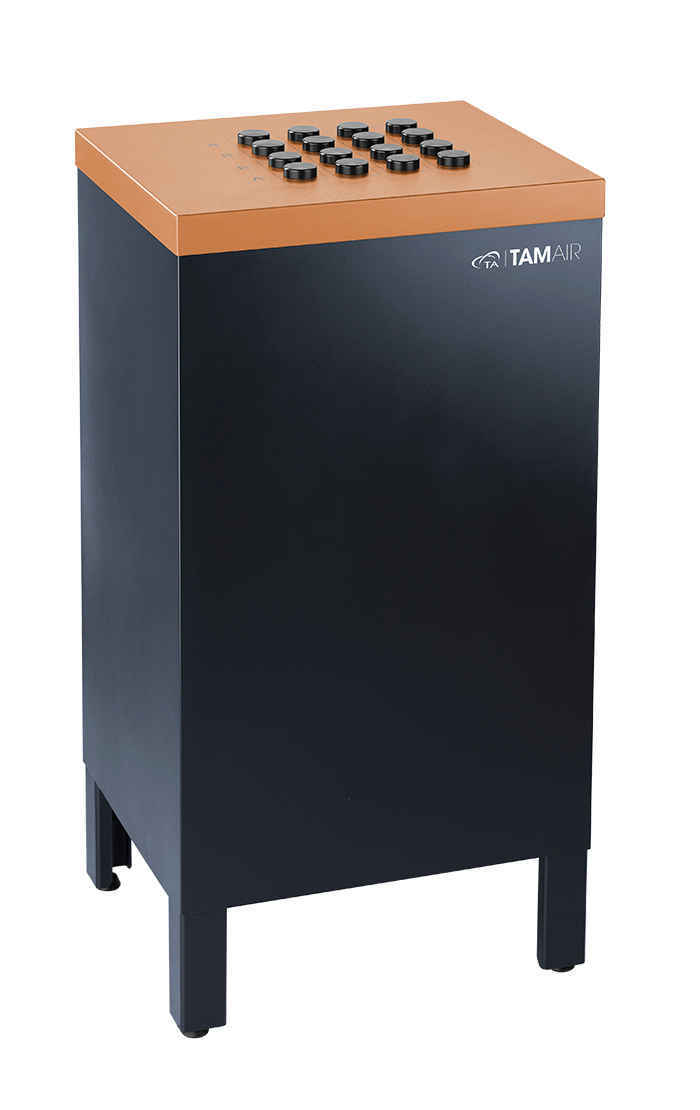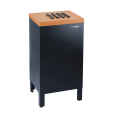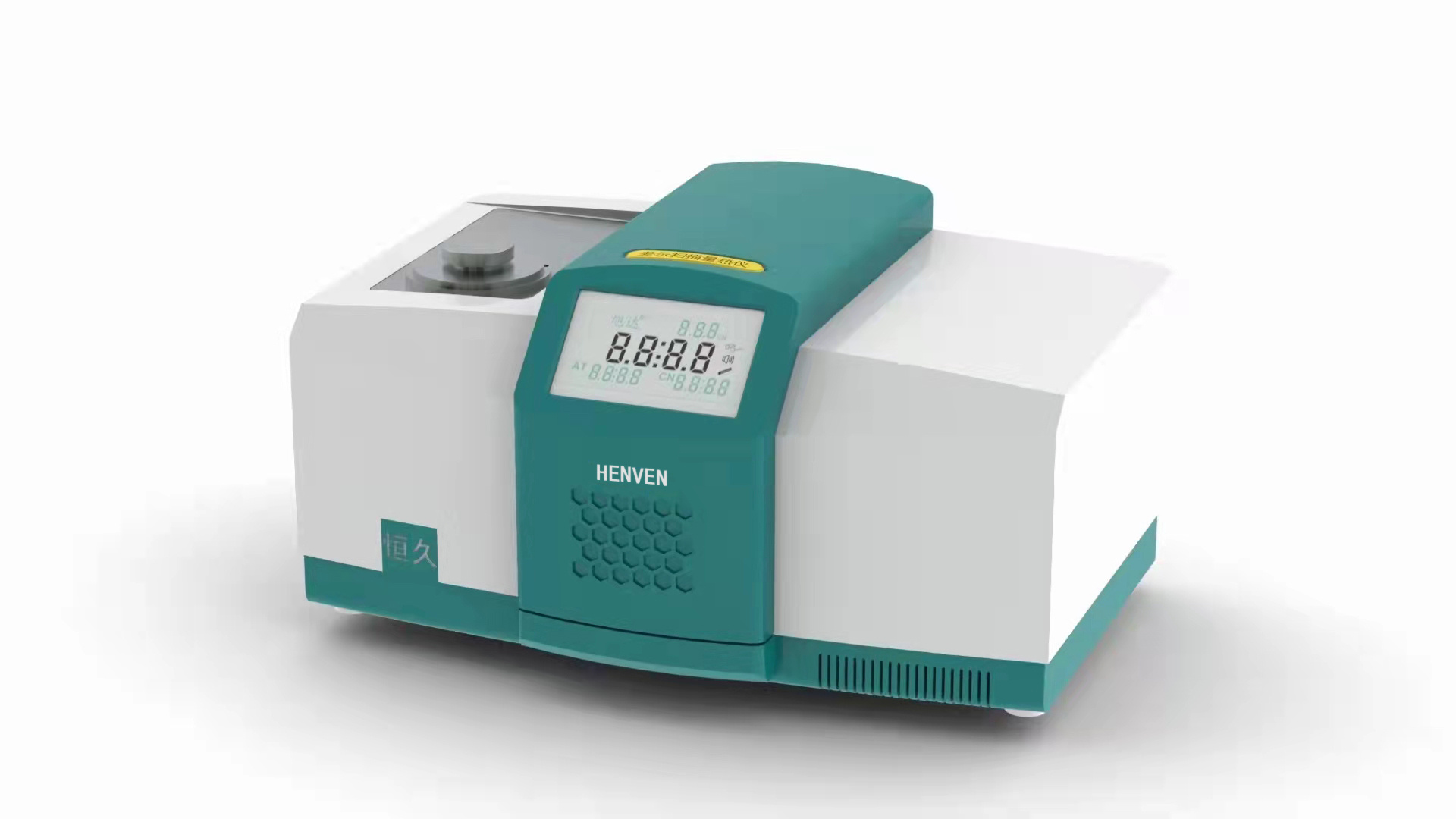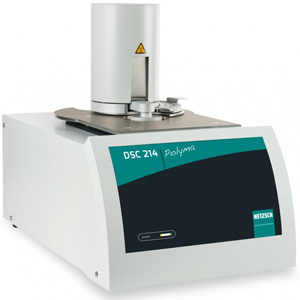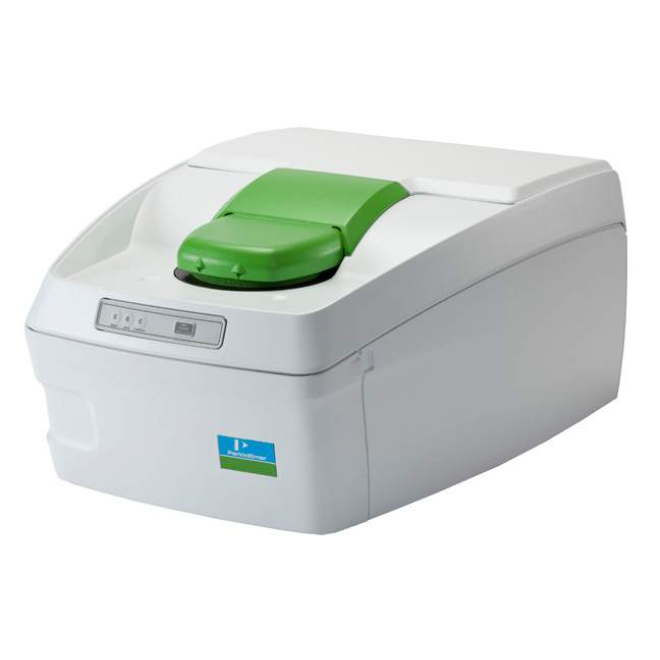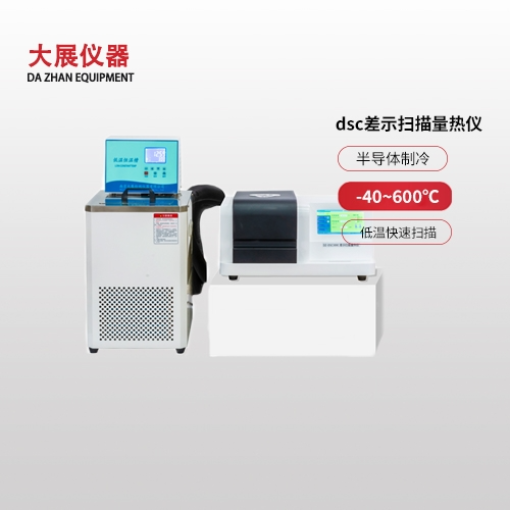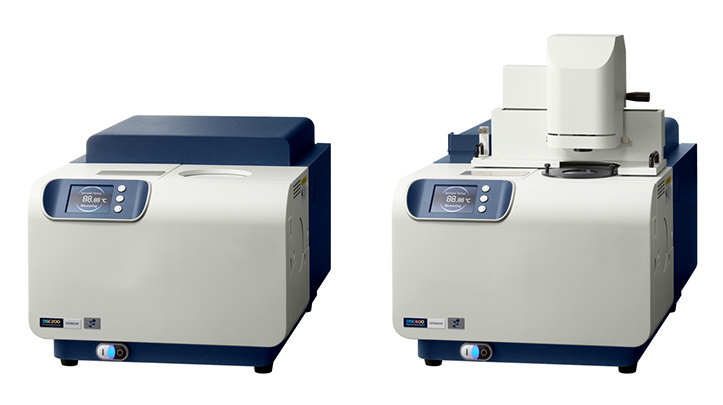方案详情
文
A common technique for sampling organic solvents in workplace air is the use of preconcentration of vapors on adsorbents. The most widely used adsorbent is activated carbon, due to its large sampling capacity. After desorption (thermal or displacement by other solvents such as carbon disulfide), analysis is made by gas chromatography. In order to avoid breakthrough, the collected amount is usually <10% of the maximum capacity (total pore volume).
方案详情

Heats of Adsorption of Various Organic Solventson Activated Carbon Using a MicrocalorimeterEquipped with a Perfusion Cell. Jan Rudling, Research Department,National Board of Occupational Safety and Health, 171 84 Solna Sweden SUMMARY A common technique for sampling organic solvents in workplace air is the use ofpreconcentration of vapors on adsorbents. The most widely used adsorbent is activatedcarbon, due to its large sampling capacity. After desorption (thermal or displacement byother solvents such as carbon disulfide), analysis is made by gas chromatography. In orderto avoid breakthrough, the collected amount is usually <10% of the maximum capacity(total pore volume). An important parameter for characterizing an adsorbent is the heat of adsorption,oH. Although it is not independent of coverage degree drastic differences are usually notcommon if the coverage degree is low. The most widely used techniques for determiningthe heat of adsorption are gas chromatographic and static methods. In practical work it isoften of interest to compare different adsorbents at the same coverage degree (that shouldbe realistic) so that more refined and time consuming methods can be substituted by fastand easy methods. EXPERIMENTAL Two activated carbons,Merck Aktivkohle (20-35mesh, Merck 9624) and SKC(lot 120, SKC Inc.Eighty Four,PA) were used in this study withcharacteristics displayed in Ta-ble 1. The temperature duringthe measurements was 25°C.Outgassed carbon (300 mg) wasfilled in the stirrer turbine (1=26 mm,D=7 mm) of the perfu-sion cell and fitted with a wirenetting at the bottom to retainthe sample. A simplified methodto generate vapors is shown inFigure 1. Two subsequent addi-tions of 3 ul solvent was madein each run. Injectionsweremade after a stable baseline wasreached and heats of adsorption Figure 1. Vapor generation system were estimated from peak ar-eas. A representative example isshown in Figure 2. The resultsare given in Table 2. The aver-age deviation between the du-plicates was about 5% and thevalues obtained are of the samemagnitude as those few, recentvalues found in the literature. CONCLUSIONS Further design consider-ations which would provide ad-ditional and morerefined infor-mation include the following: 1) thermostatting the en-tire vapor generation system tothe same temperature as in thecalorimeter should allow higherflow rates to be tolerated; 2) theuse of diffusion cells in the gen-eration system should providea more accurate, calculable va-por concentration; and finally 3)it would be preferable to use a Figure 2. 3ul hexane on 300 mg SKC carbon smaller diameter adsorption column and to monitor the column outlet to ensure break-through does not occur. SKC Merck BET Surface Area (m²/g) 1120 1150 Pore Volume (cm/g) 0.59 0.60 pH in Aqueous Solution 9.7 5.7 Table 2 Heats of adsorption (averages) Heat of adsorption (kcal/mole) SKC Merck Literaturea Hexane 14.2 15.1 Toluene 12.2 Ethanol 9.6 12.5 10.5 Propanol 14.5 14.5 Acetone 11.0 11.0 一 Water 8.6 11.5 a Selim M M et al, Carbon 19, 161-5 (1981). M A common technique for sampling organic solvents in workplace air is the use of preconcentration of vapors on adsorbents. The most widely used adsorbent is activated carbon, due to its large sampling capacity. After desorption (thermal or displacement by other solvents such as carbon disulfide), analysis is made by gas chromatography. In order to avoid breakthrough, the collected amount is usually <10% of the maximum capacity (total pore volume).
确定
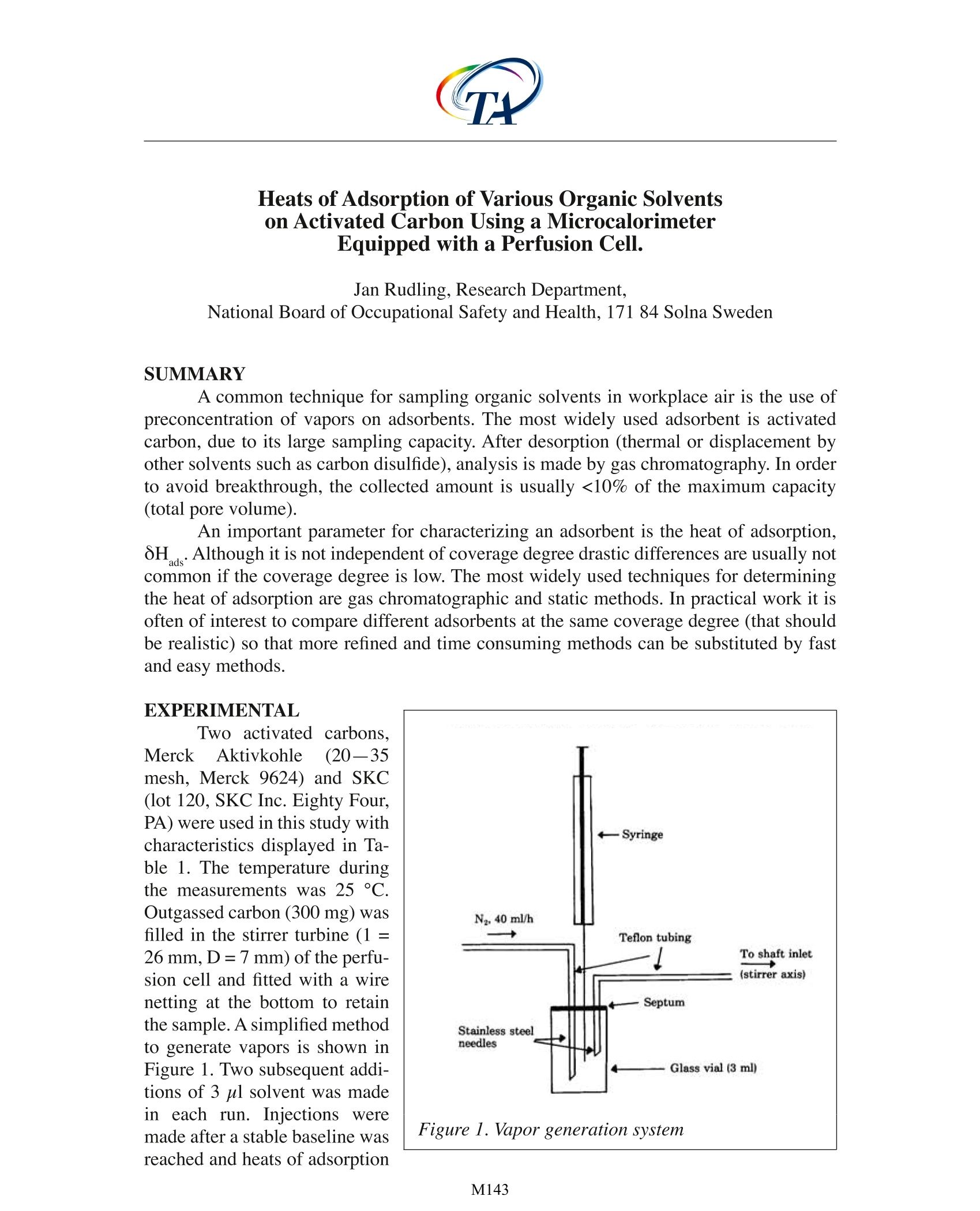
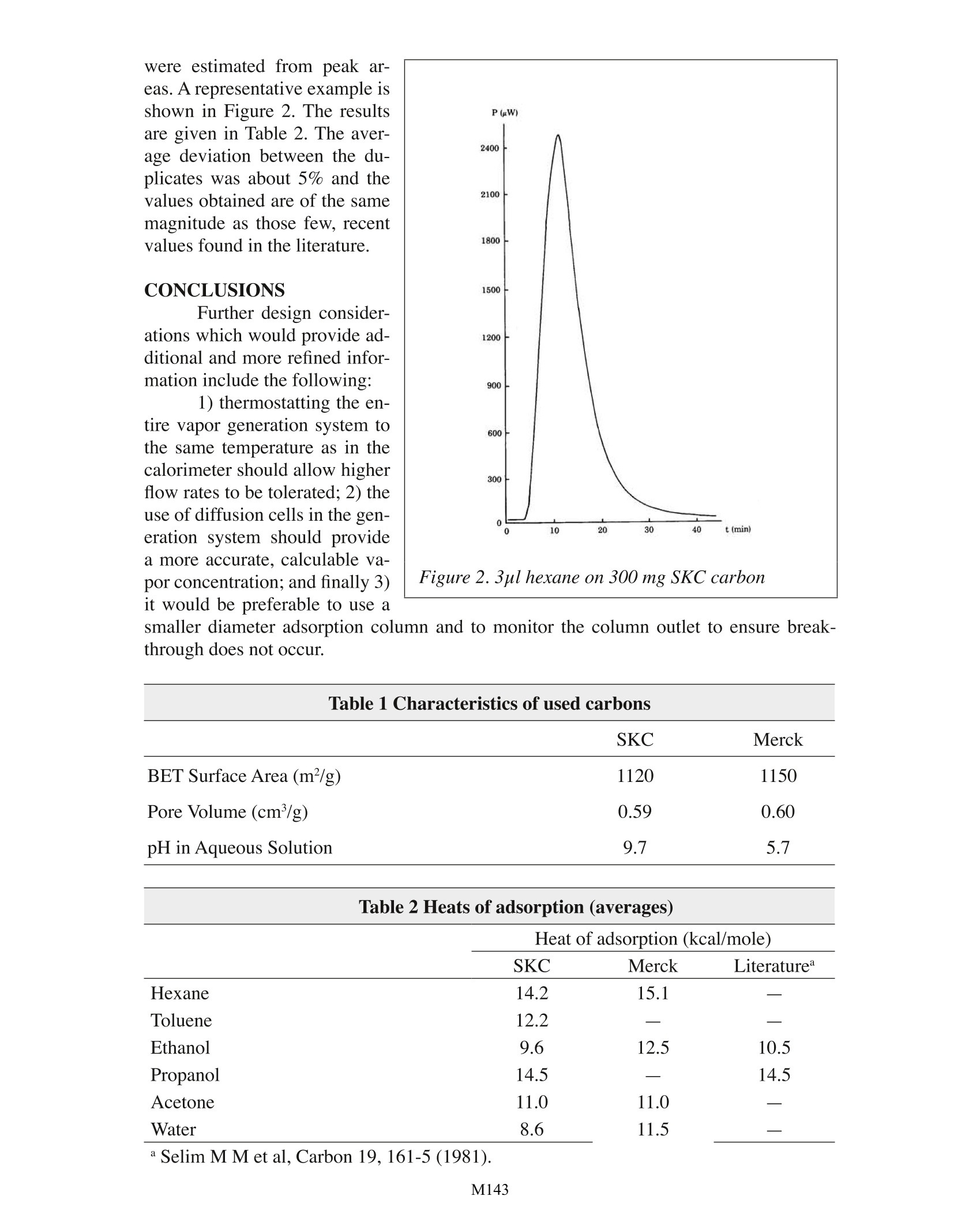
还剩1页未读,是否继续阅读?
TA仪器为您提供《活性炭,有机溶剂中吸附热检测方案(差示扫描量热)》,该方案主要用于醇中理化分析检测,参考标准--,《活性炭,有机溶剂中吸附热检测方案(差示扫描量热)》用到的仪器有TA仪器+等温量热仪+TAM Air
推荐专场
该厂商其他方案
更多

